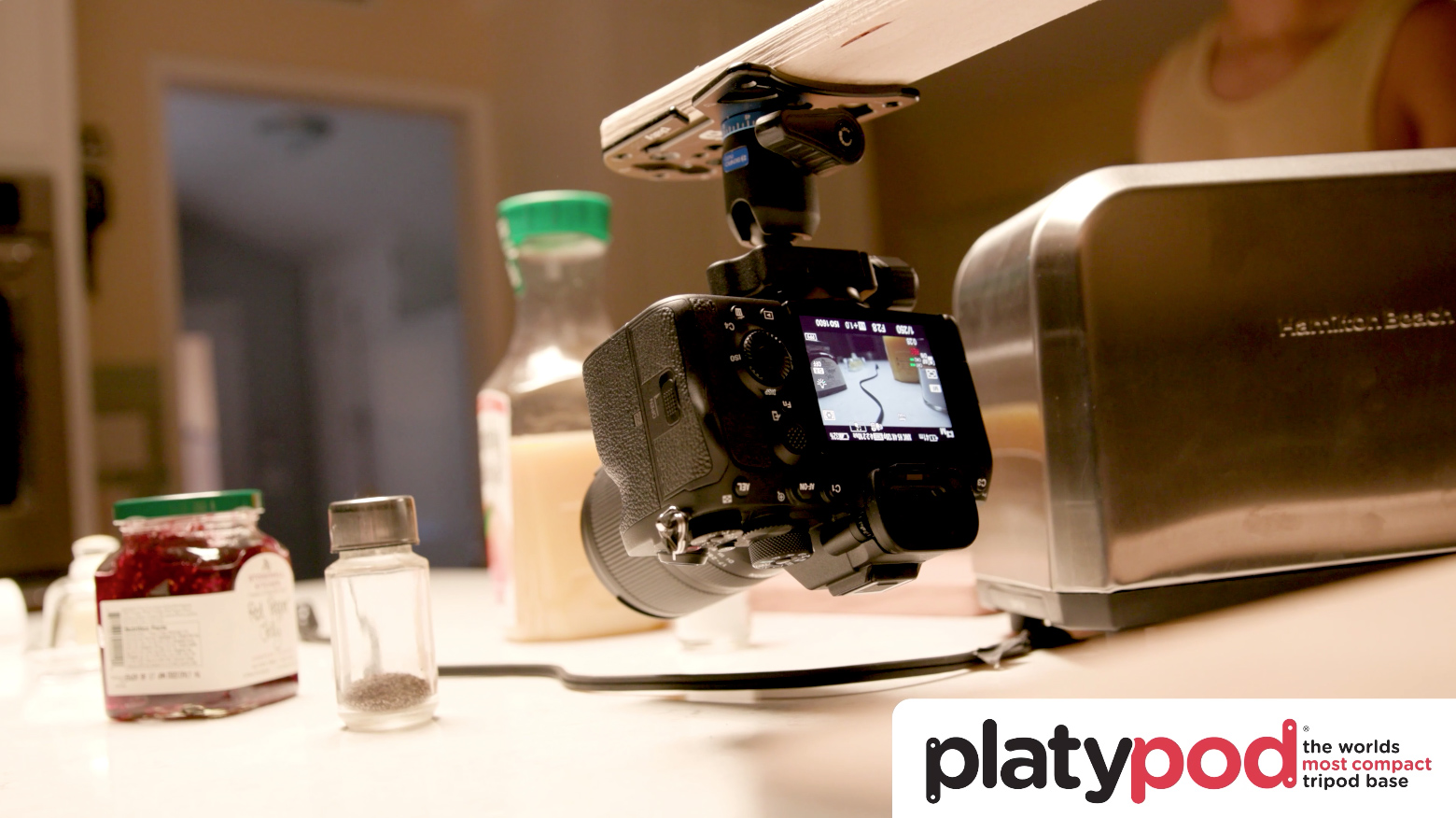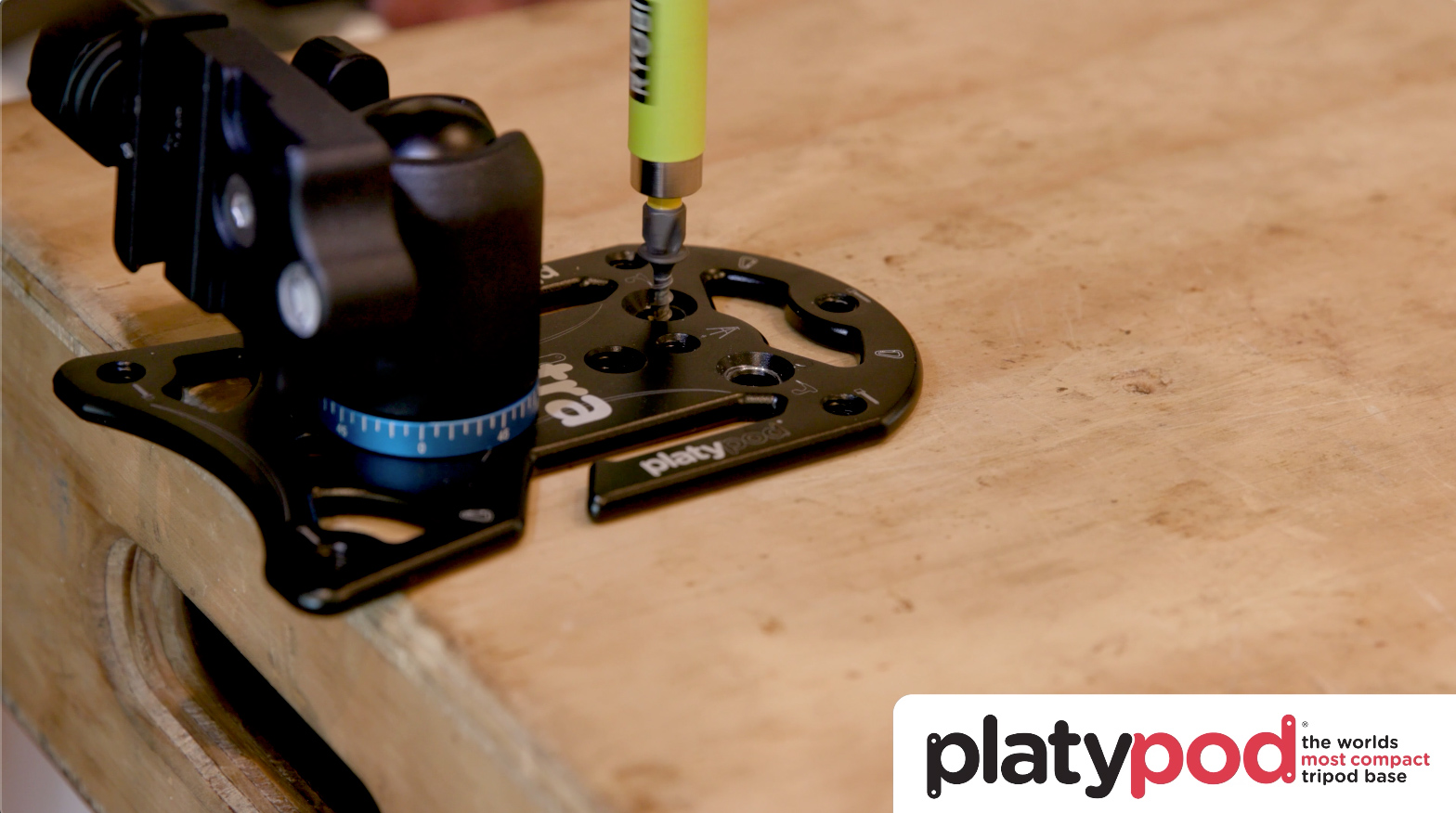Using 120 frames a second and some speed ramping in post, plus some physical effects, to make a really boring subject matter super engaging and exciting to watch. Let’s take a look at how we did each one of these shots.
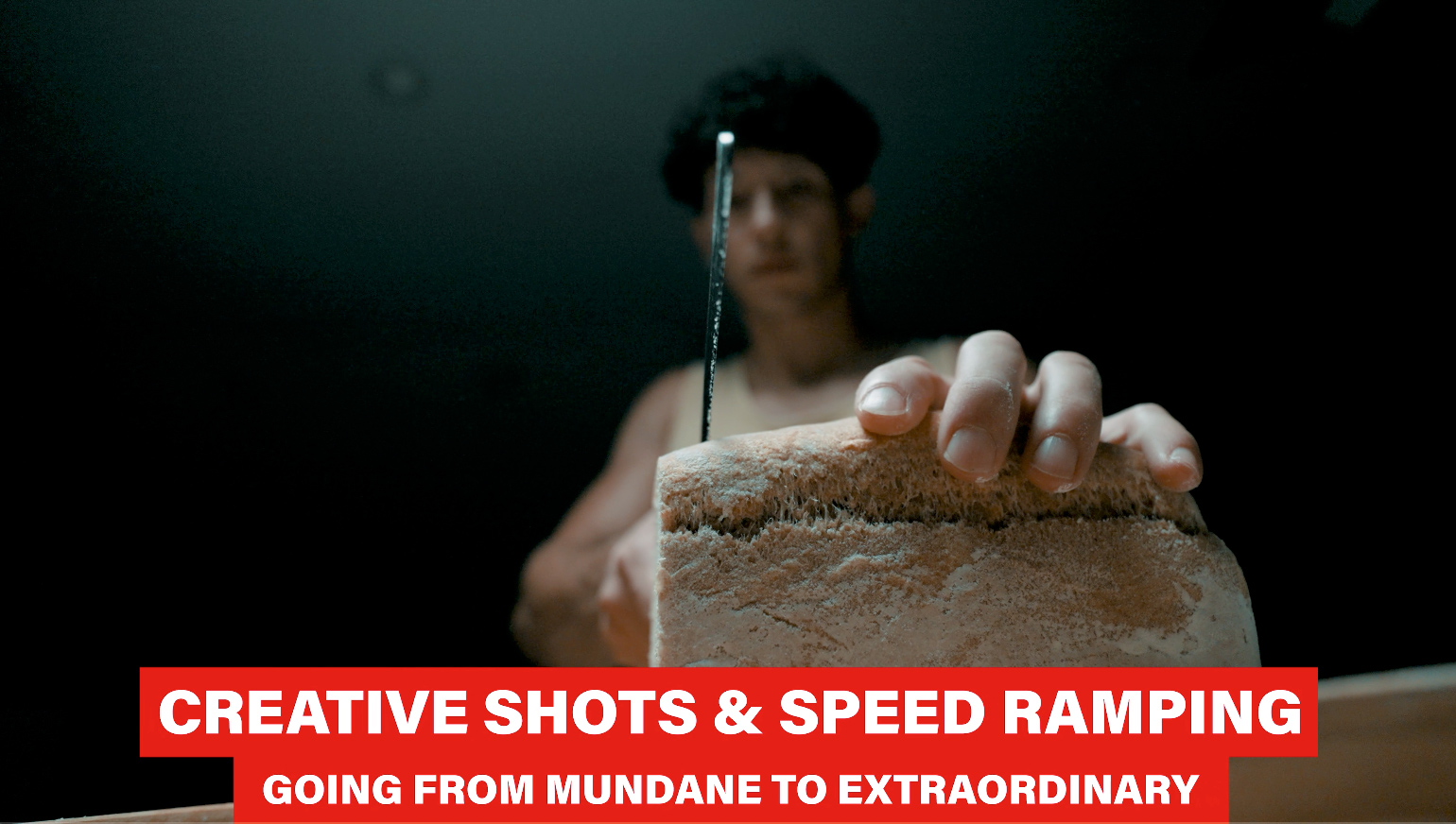
As a filmmaker, and especially as a commercial filmmaker, you’re faced with the challenge of making mundane, ordinary things look really interesting and engaging. So you apply 120 frames a second, with some speed ramping, use some physical rigs and you get inside things for some really interesting shots. And that creates a very fascinating, fun to watch, video when you’re done. This is super important to do because as a commercial filmmaker, when you’re given something like a bicycle part, you’ve got to be able to know how to make that interesting, engaging, and get the viewer to want to watch it. Let’s take a look at how we did this video.
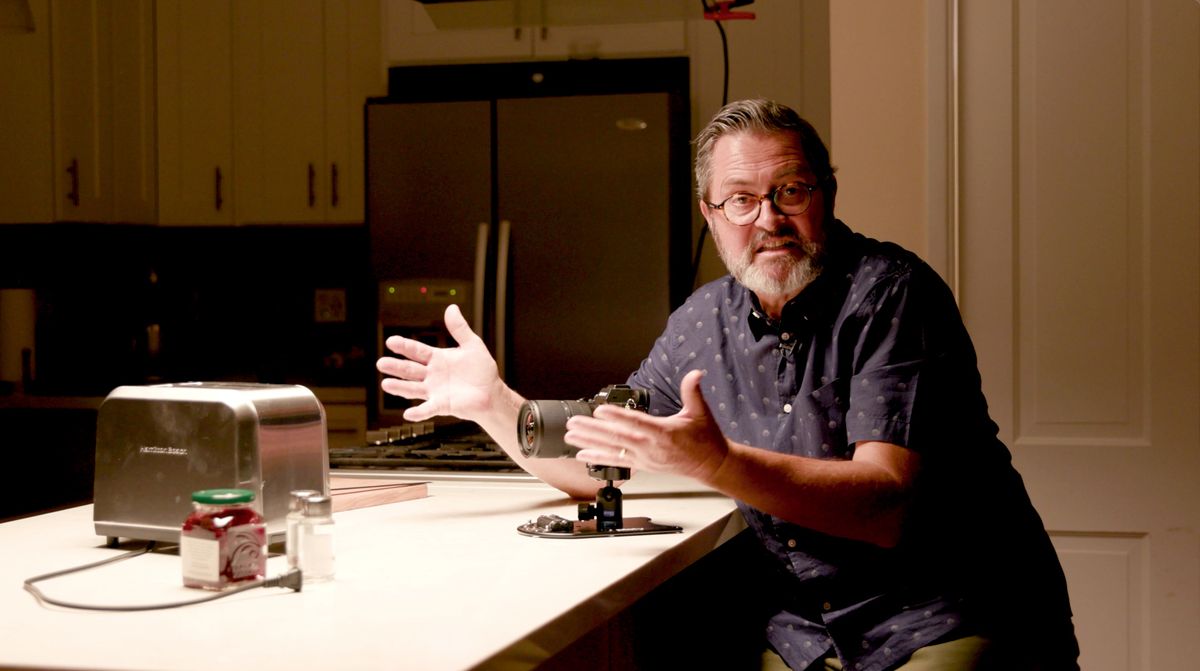
So this first shot is just the establishing shot. I’ve got the camera on a Platypod. I’m in tight on it with a wide lens so I can see the whole room. I see the things on the counter. It just gives me a great establishing kind of look. It’s hard to get this without being on some kind of a support like the Platypod where you can get in close and be close to the toaster on the counter. So I’m going to be working off from this a lot. So I’m on the counter with that wide lens. It just establishes our talent and things on the counter and we cut to the fridge.
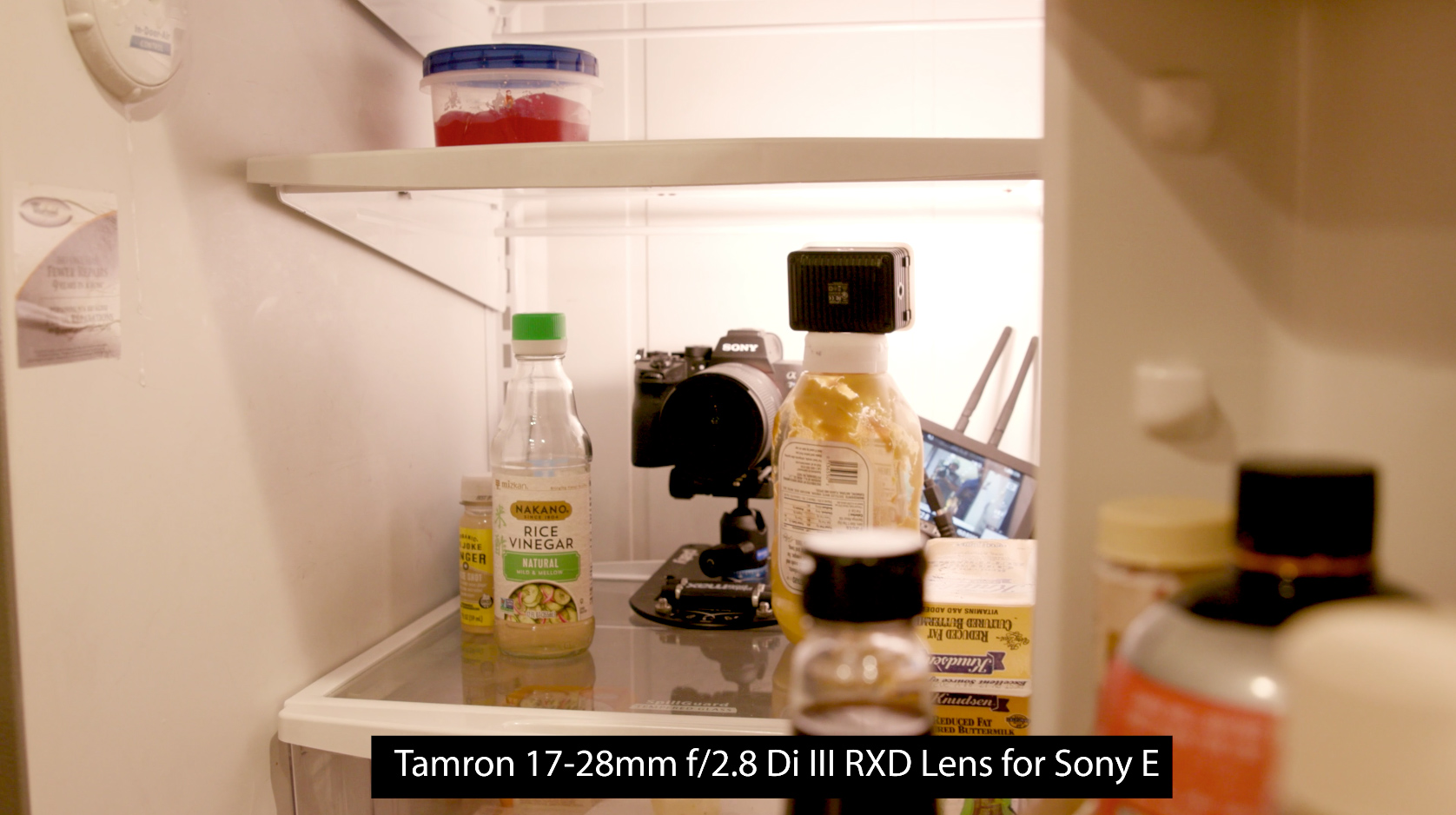
Classic fridge shot, we’ve got our camera on a Platypod in the back. We’ve got a monitor on it, so we can see exactly what it is seeing. 17 millimeters to get that nice wide view. We’ve got a light back in there. It’s a Litra studio light. It’s bouncing in the back of the fridge, lighting his face.
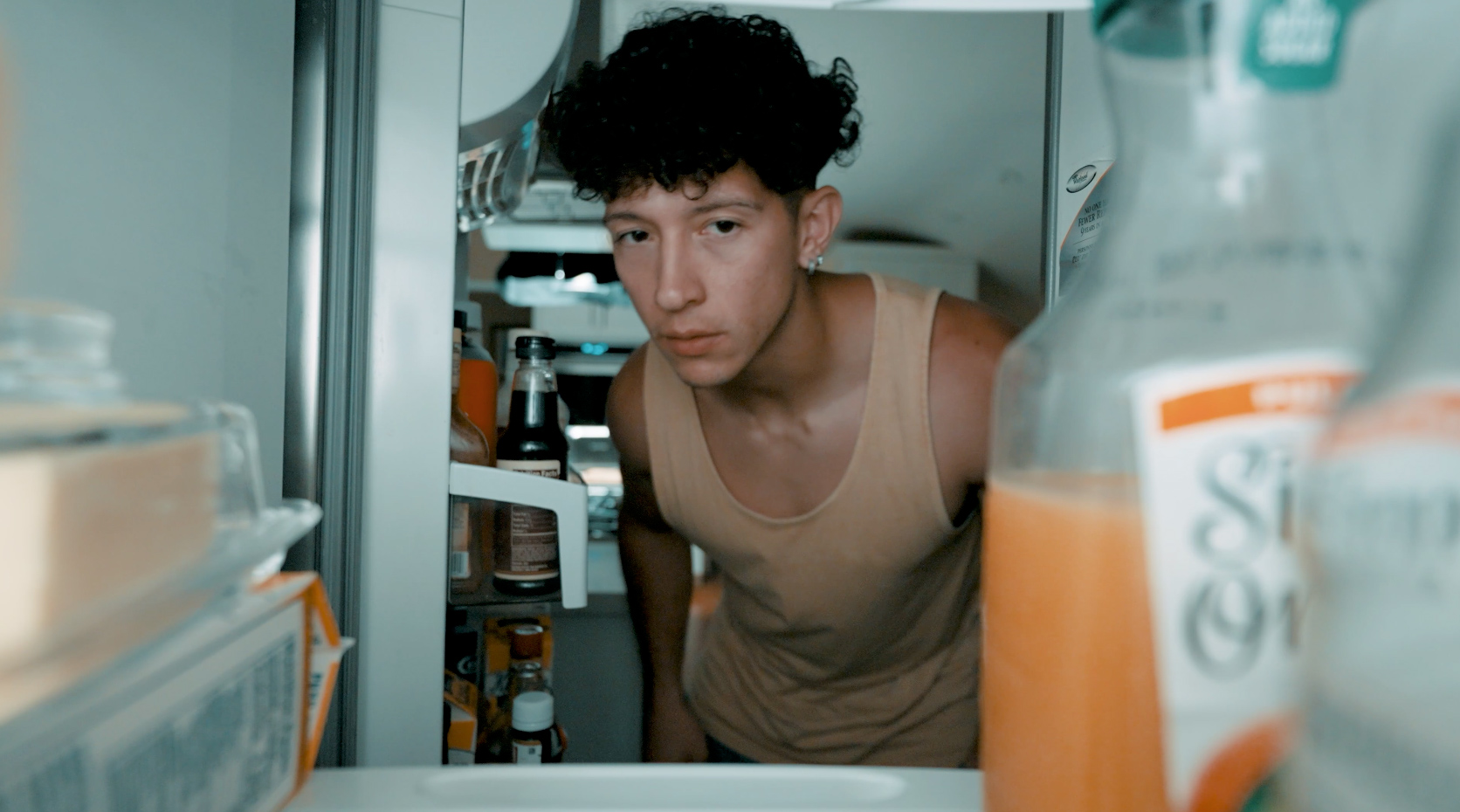
And then we do two different versions. We’re going to do 24 frames, where he just looks and takes some things out. And we’ll also do 120 frames a second. We can speed ramp that to make that a little more interesting. Make that fun. We’ll try both those versions in the edit. So there’s our shot in the fridge.
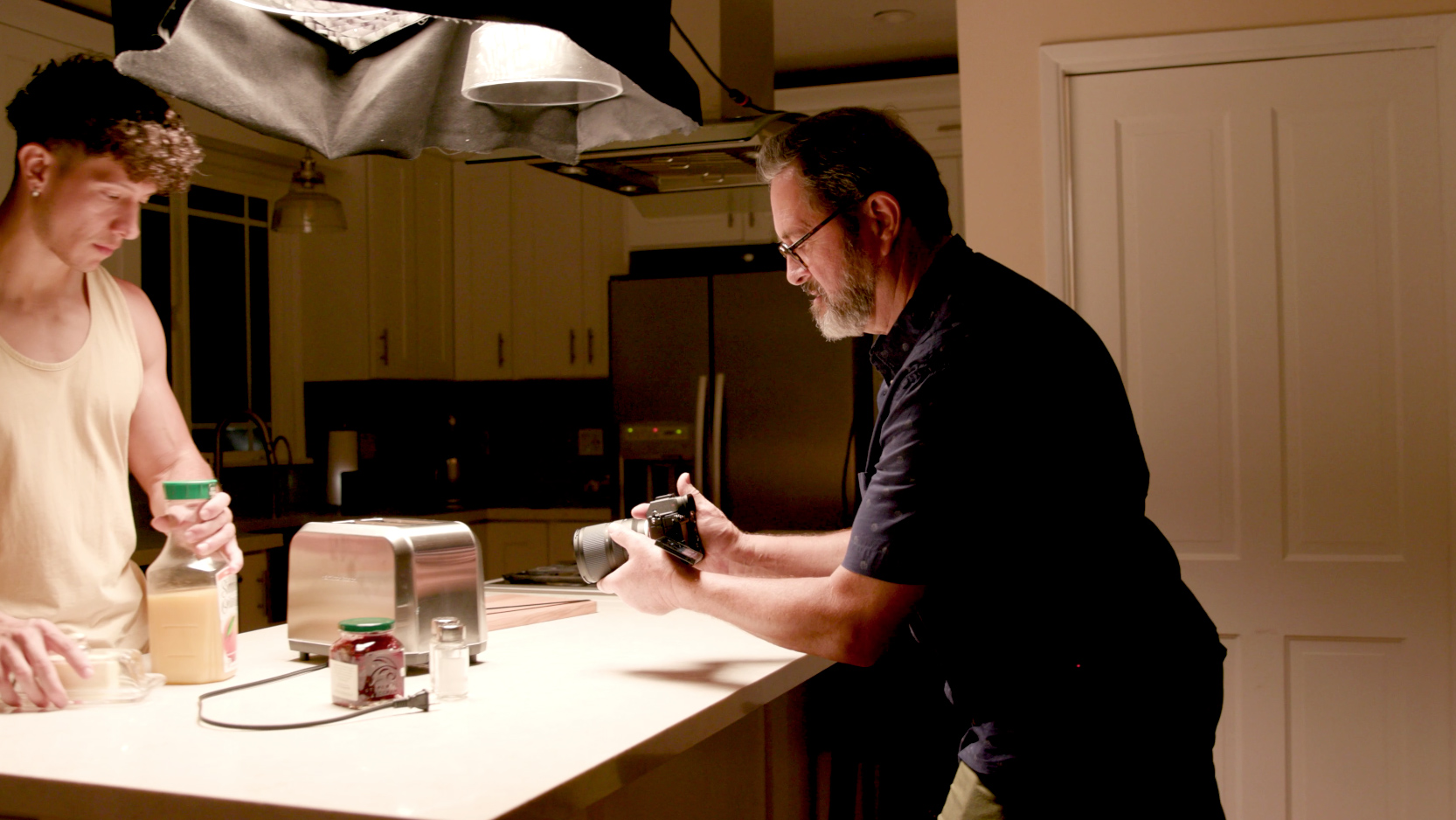
For this shot, I’m going handheld at 120 frames a second. That is this really smooth kind of movement. It looks very much like a slider at 120 frames a second. And that’ll ramp in post to look really cool. We can shorten it up and just make this quick establishment of the juice going down. 120 frames a second looks great.
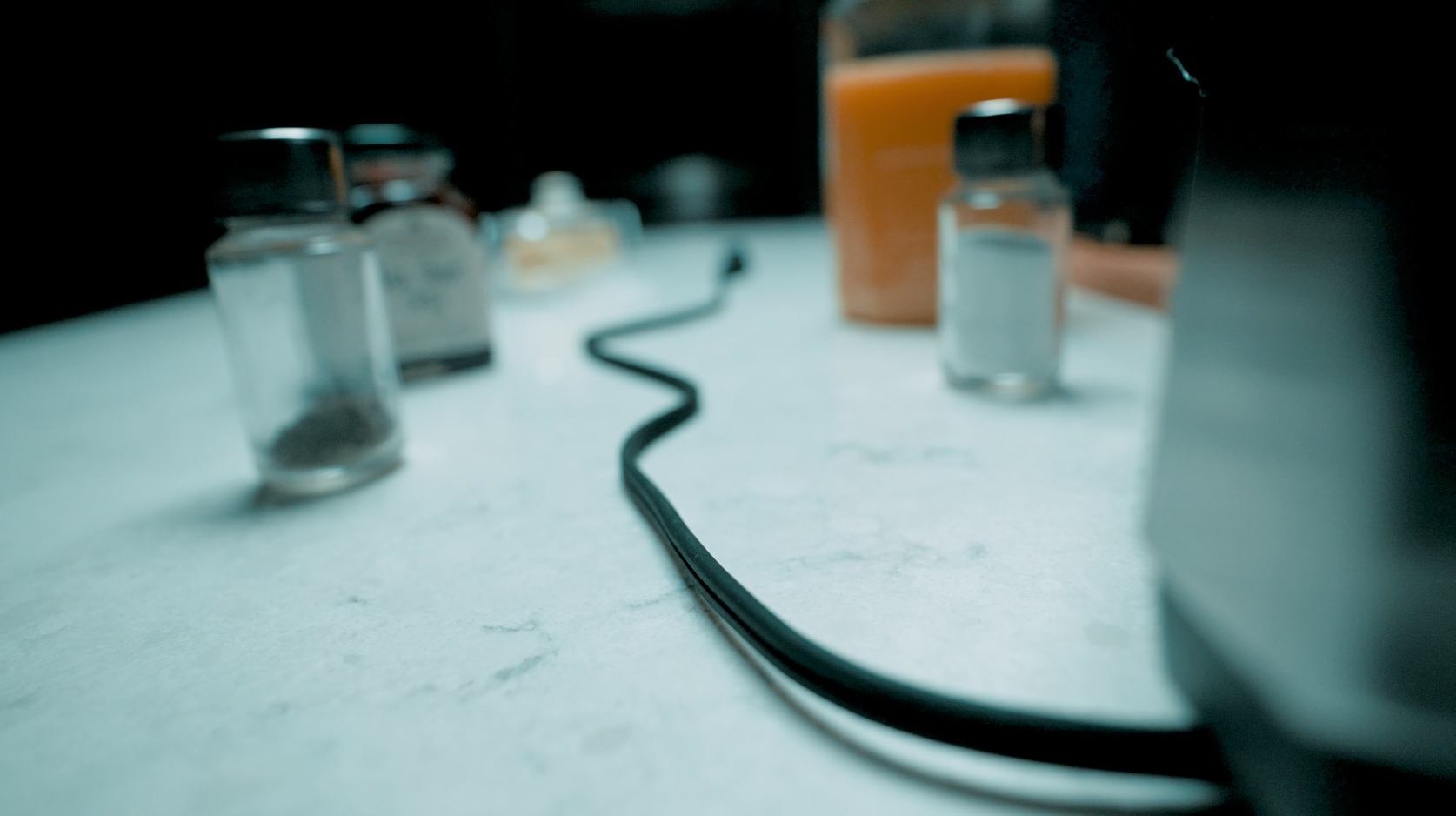
So we’ve got our makeshift probe lens set up here. The idea is to pass through things. If I just follow the cord, that’s cool. But having the jam and the juice and the toaster and things along the way so you’re passing things and so the things are passing you make it look much cooler. We will have to slide the toaster out as the camera goes by because the camera would hit the toaster. But as the toaster gets close, we’ll just kind of slide to the side and let it go on through. It looks very cool. Then Chris will grab it at the end so we can kind of speed this up to go into real time as he picks it up. And that gets us into a transition to our next shot.
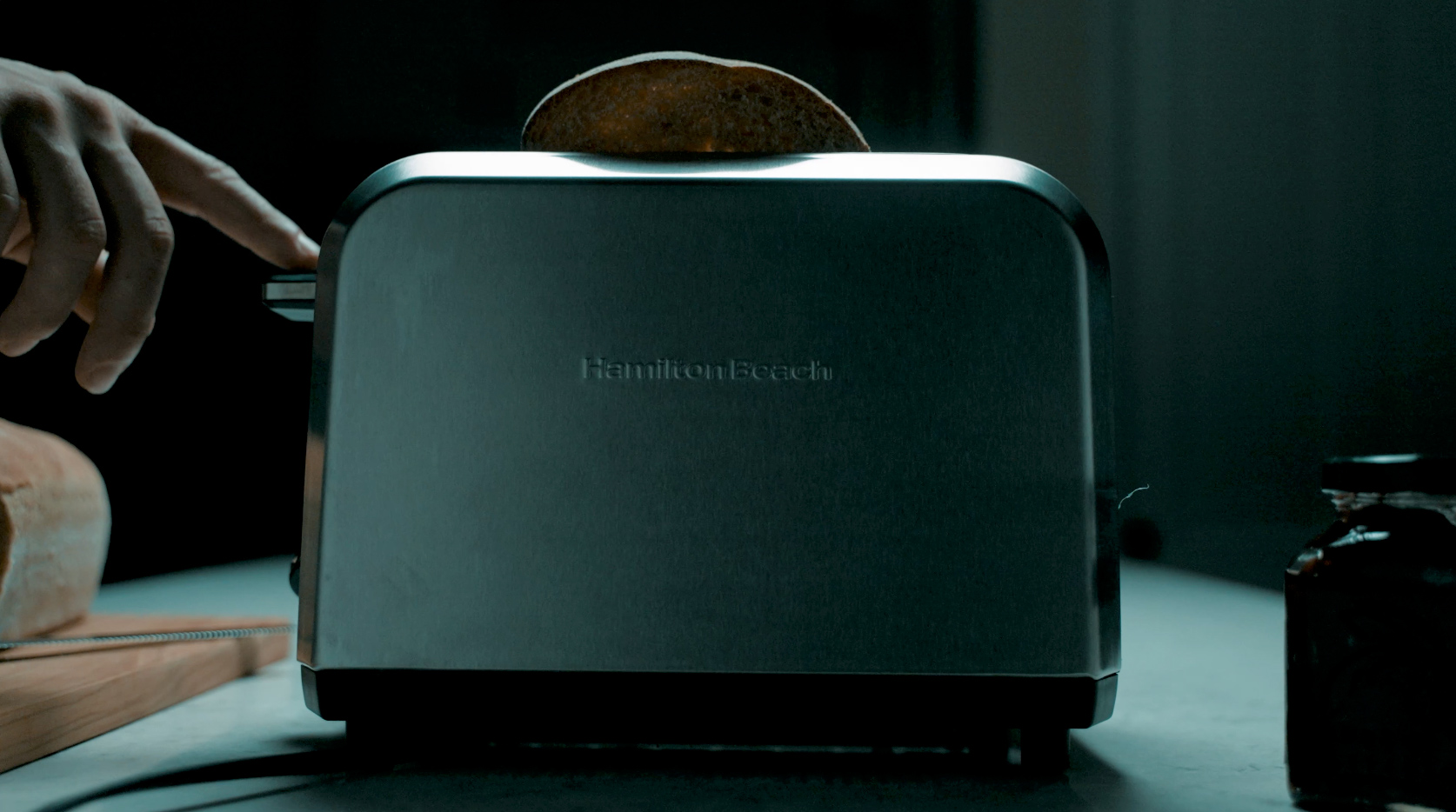
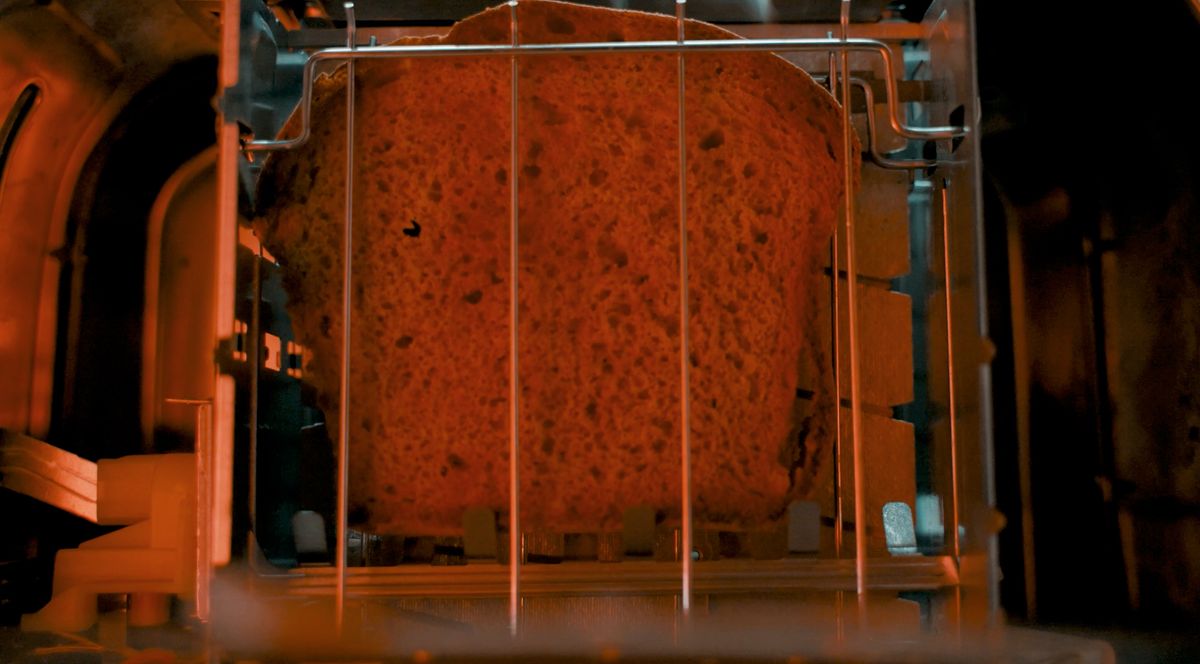
So we’re going to combine two shots here. The slider is going to move in on the regular toaster. The handle will go down and the toast will go down. Then the slider will get in tight. Then it’ll slide back out and the toasted toast comes up. Then we’re going to replace this toaster with an identical toaster in the exact same spot. And as the camera finally just breaks into the sides of the toaster, we’ll dissolve it into the toaster that is stripped open on the side. The side has been peeled back to be able to see what’s going on inside. We see the elements on. We see the red glow. We see the toast starting to toast. And then the camera will pull back. And as it starts to pull back we blend back to the other shot. So it’s going to look like the camera went and kind of popped inside the toaster and then popped back out. And if I do that, right, if I blend those two correctly in the edit, and just give us a little ramp in and ramp out, it’s going to look really cool.
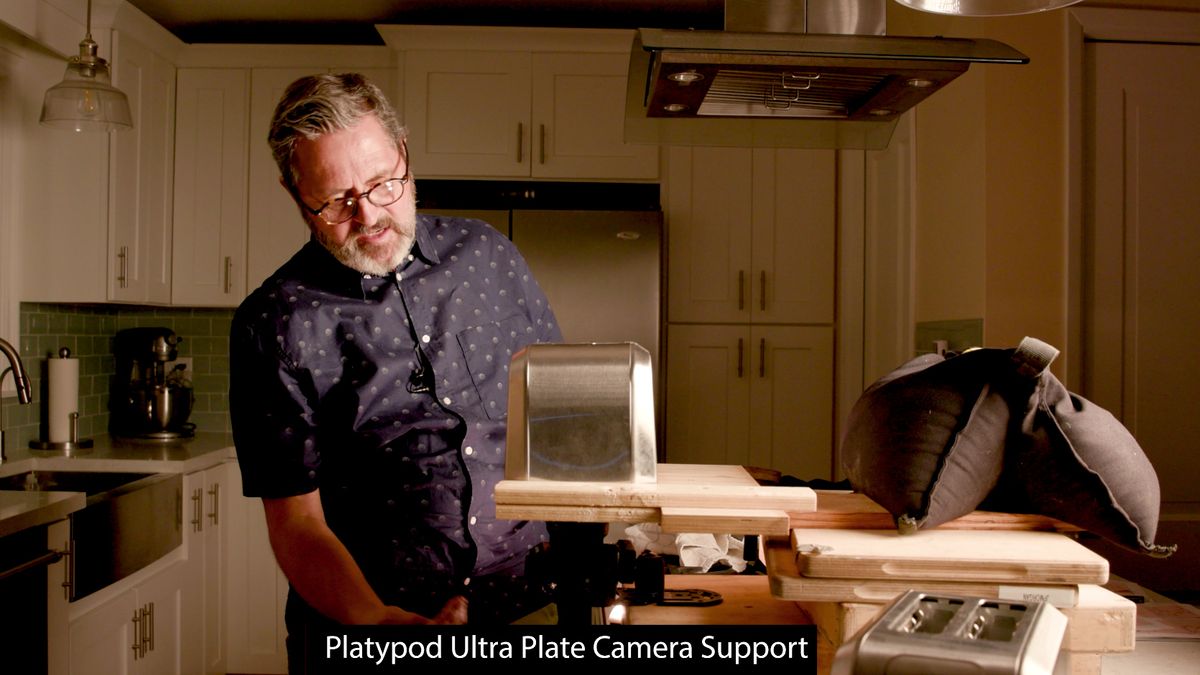
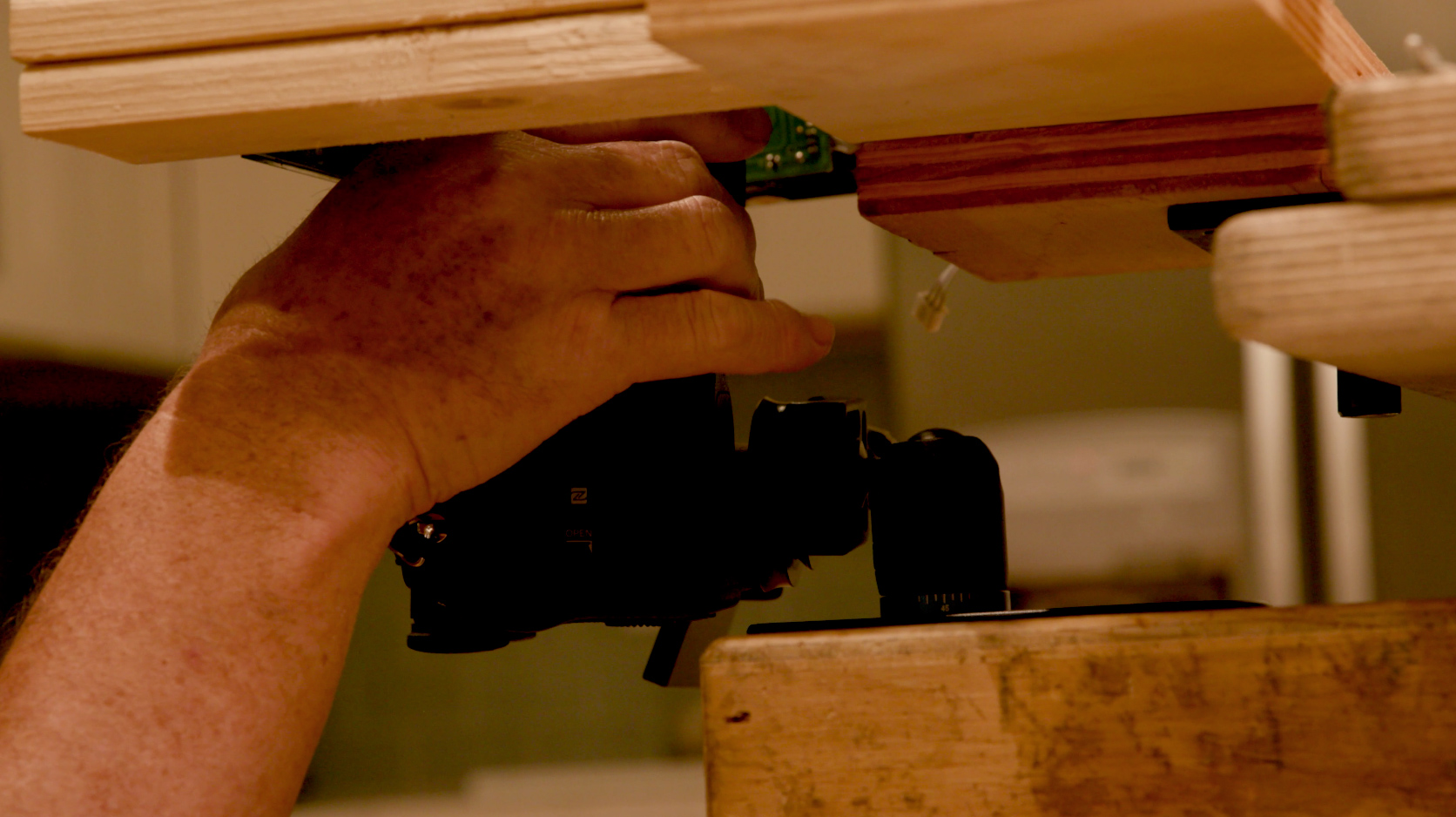
So I’ve got a series of down rigs here and we have a Platypod just attached to the box. It just makes it easy for me to get a camera slung under to be able to look straight up. And I can also move this around on the counter depending on what I want to see up on top. And then I just took the top off one of the toasters and attached that to a couple boards here so I can put it on a board and put a sandbag on it. Now we can look straight through it and he can look into it.
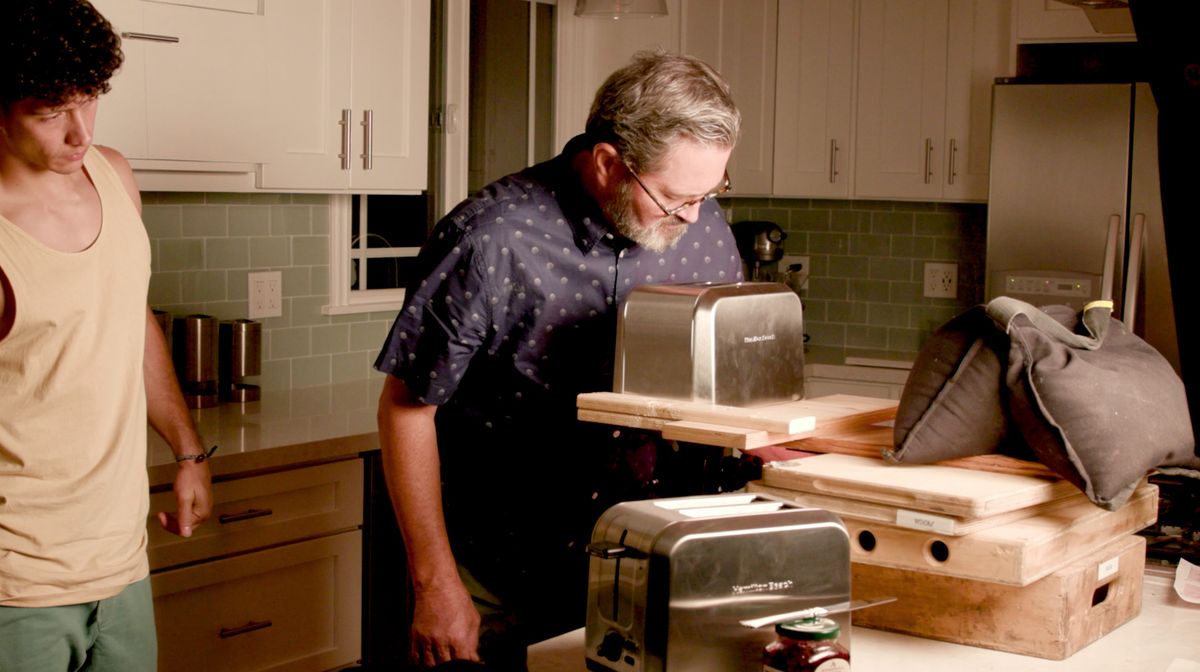
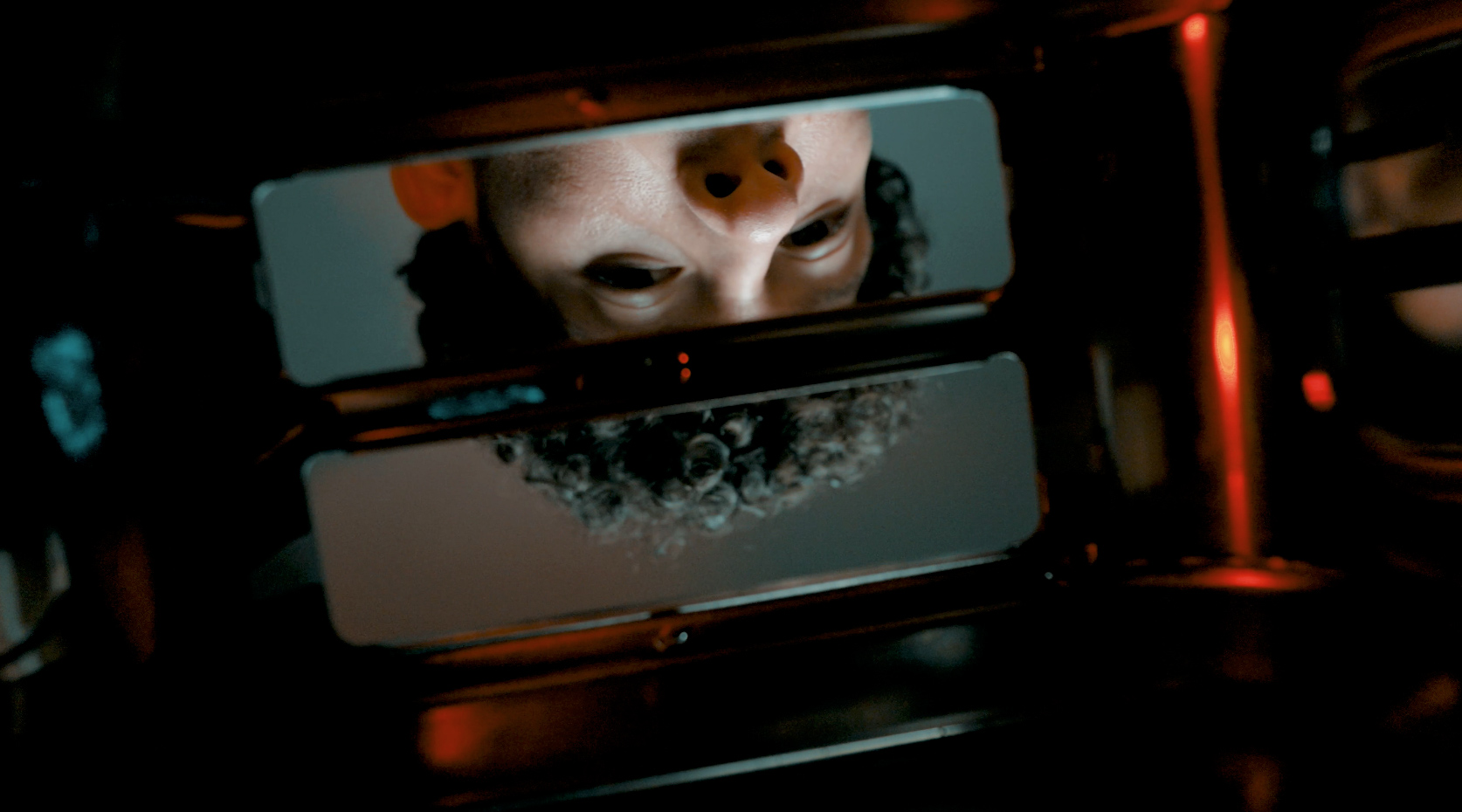
So don’t be afraid to create things, wreck things, cut things or take things apart. I mean, this toaster was $20 bucks. You know, it’s not like I’m spending a fortune. But it’s going make it so I can do several different shots with a toaster as I tear it apart and it just gives us some cool shots.
So I am using a Litra Pro light just down on the ground at about 10 or 15%, very low just to open up a little bit of the shadows inside the container. So the container has a little bit of depth and isn’t just a black hole.
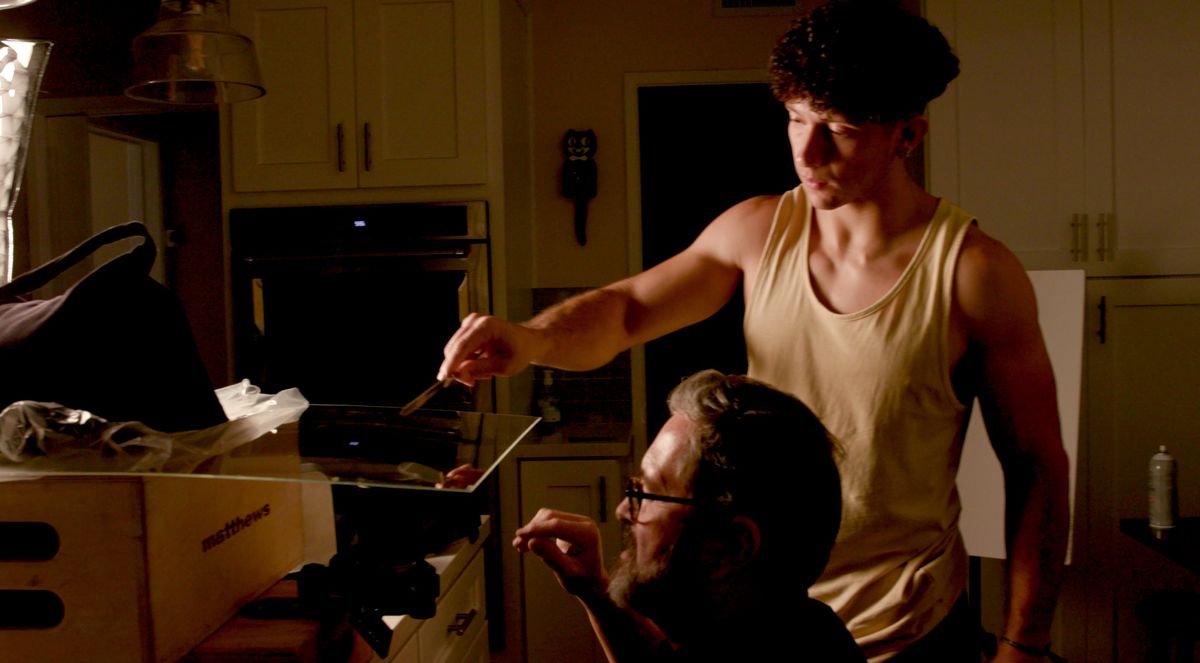
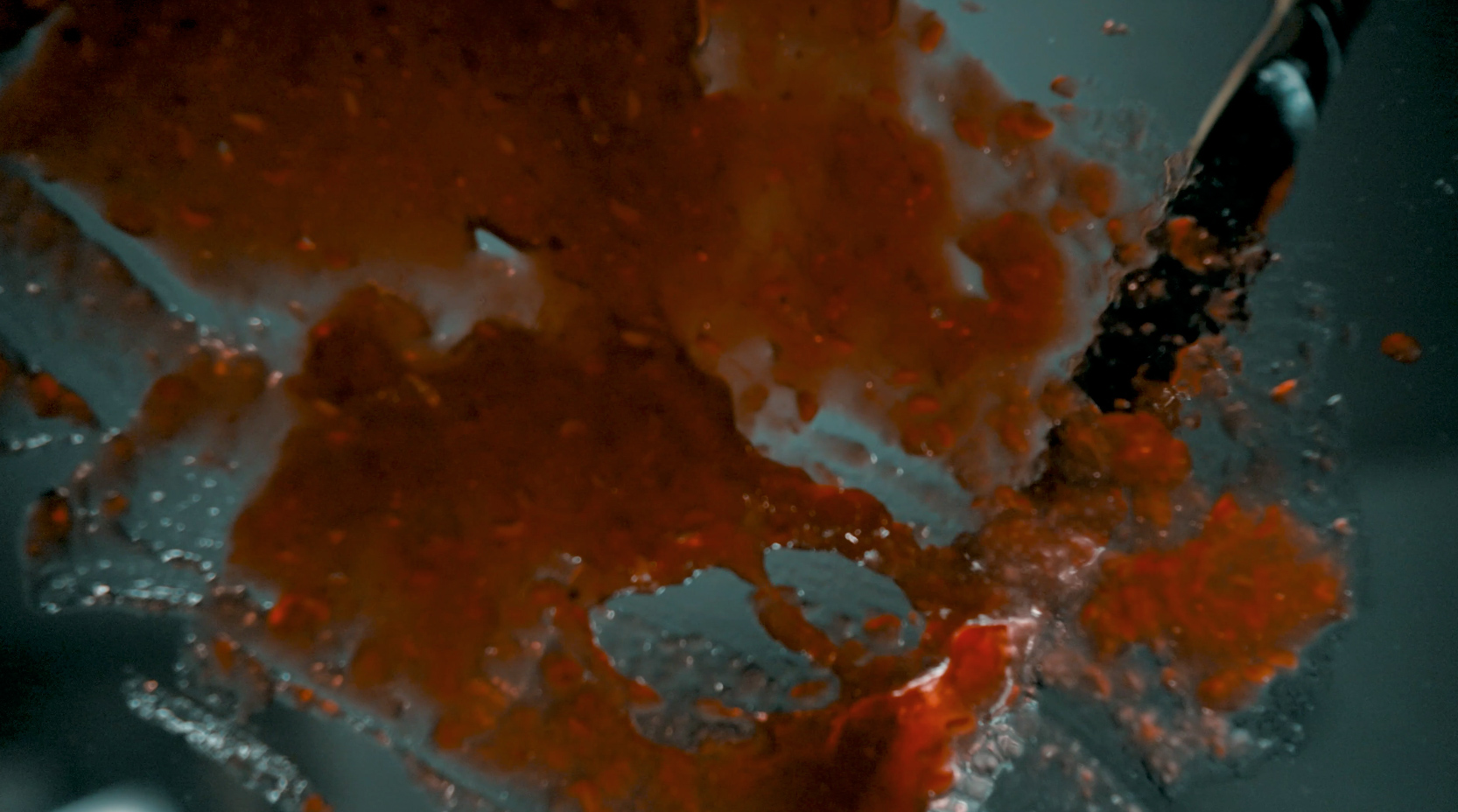
So we’ve continued to shoot straight up. I just love this kind of setup with the Platypod and a piece of plexiglass because I can now shoot everything up. I can put a plate on here, which we did, we can do the jam on top of the plexi so it just starts to wipe the frame. I’ve been shooting that shot since the 80s when we started doing that for Comedy Central with weird things wiping across the camera like mud or those kinds of things. I’ve been shooting that shot for years and years and years. Like the plate and the butter dish. All those things just give us quick cuts that we can use in the storytelling process to just change the size of the frame to give us a little more interest and to move the story along.
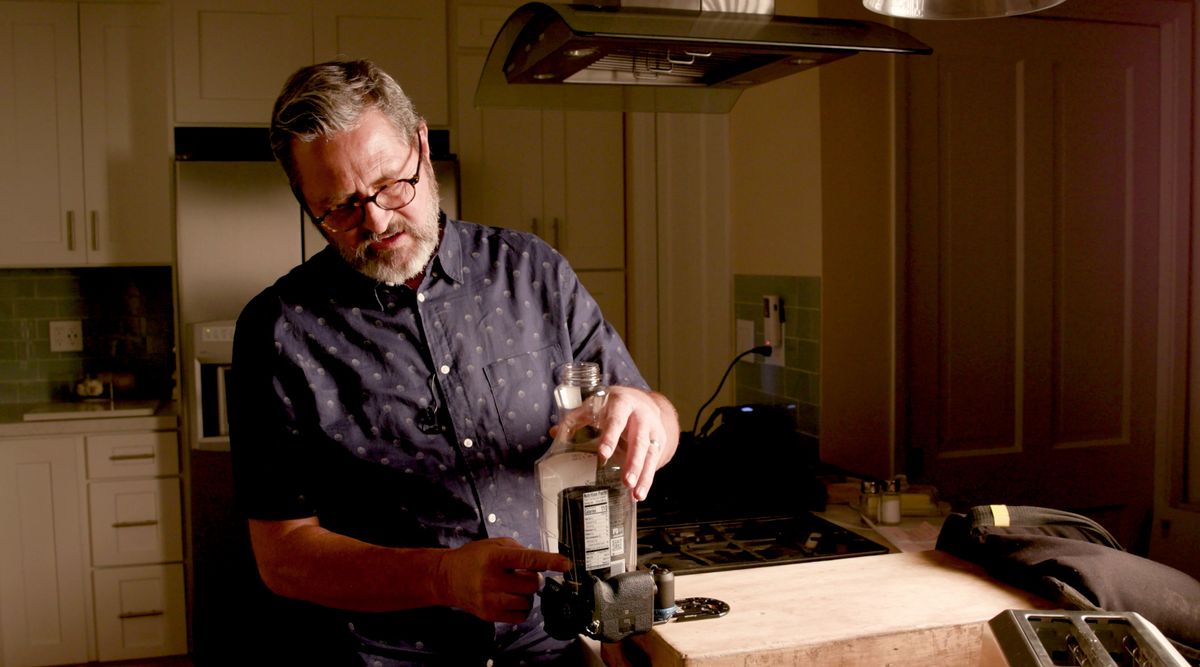
So I just cut the bottom out of the orange juice container so that we can put that right over the lens. I cut out the side here so I can still focus, which I needed to do. And then we just got Chris to come in and put his nose in it. Just a little sniff. Just a funny little shot that we’ll insert in just before he pours. So, the bottom off of a container.
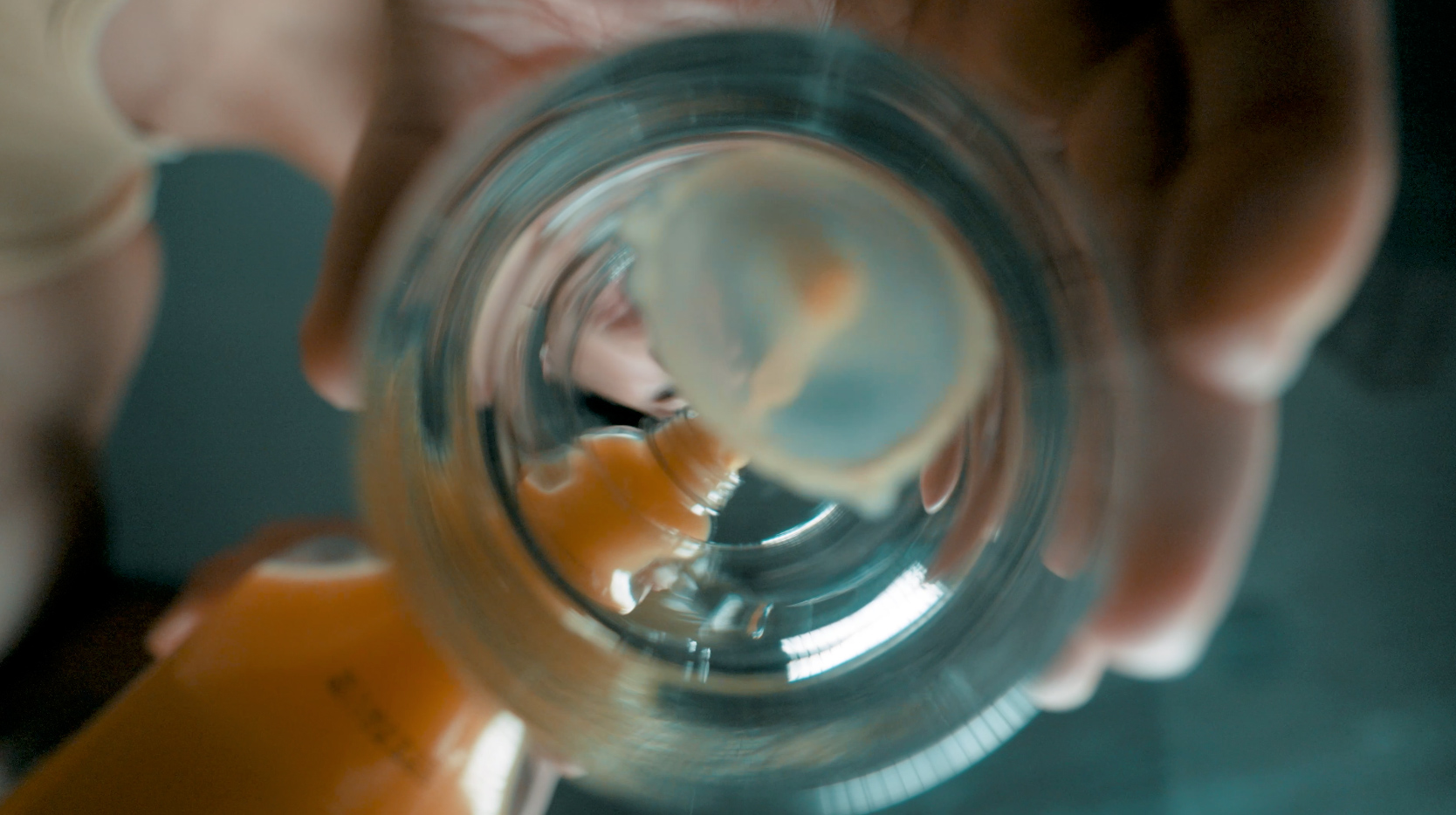
We’re doing our down shot still. We cut the bottom out of a glass and stuck it on plexi with some silicone. And that way we can pour juice straight towards the camera at slow motion 120 frames. We see the juice kind of bounce around in there. It’s just a quick little shot. I did two of them on a little piece of plexi here, because I just want to be able to shoot one right after the other. So it’s really quick to be able to get them to clean them up. Or we clean them both up when cleaning them up. We shoot bam, bam, bam, bam, it just helps us move faster.
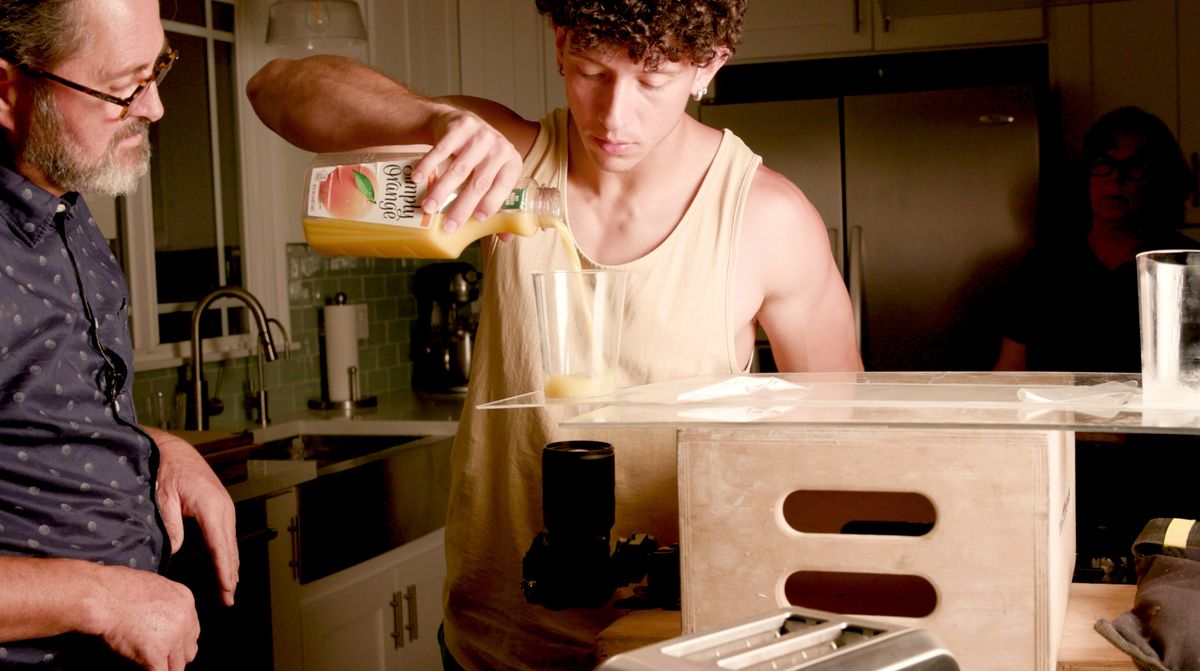 So everything is going to impact this video completely based on how quickly we cut from scene to scene, the way we ramp, the way we do the transitions, all those things are going to add to the pacing. The music and all this is going to help us to get a final piece. So let’s take a look at that final piece.
So everything is going to impact this video completely based on how quickly we cut from scene to scene, the way we ramp, the way we do the transitions, all those things are going to add to the pacing. The music and all this is going to help us to get a final piece. So let’s take a look at that final piece.
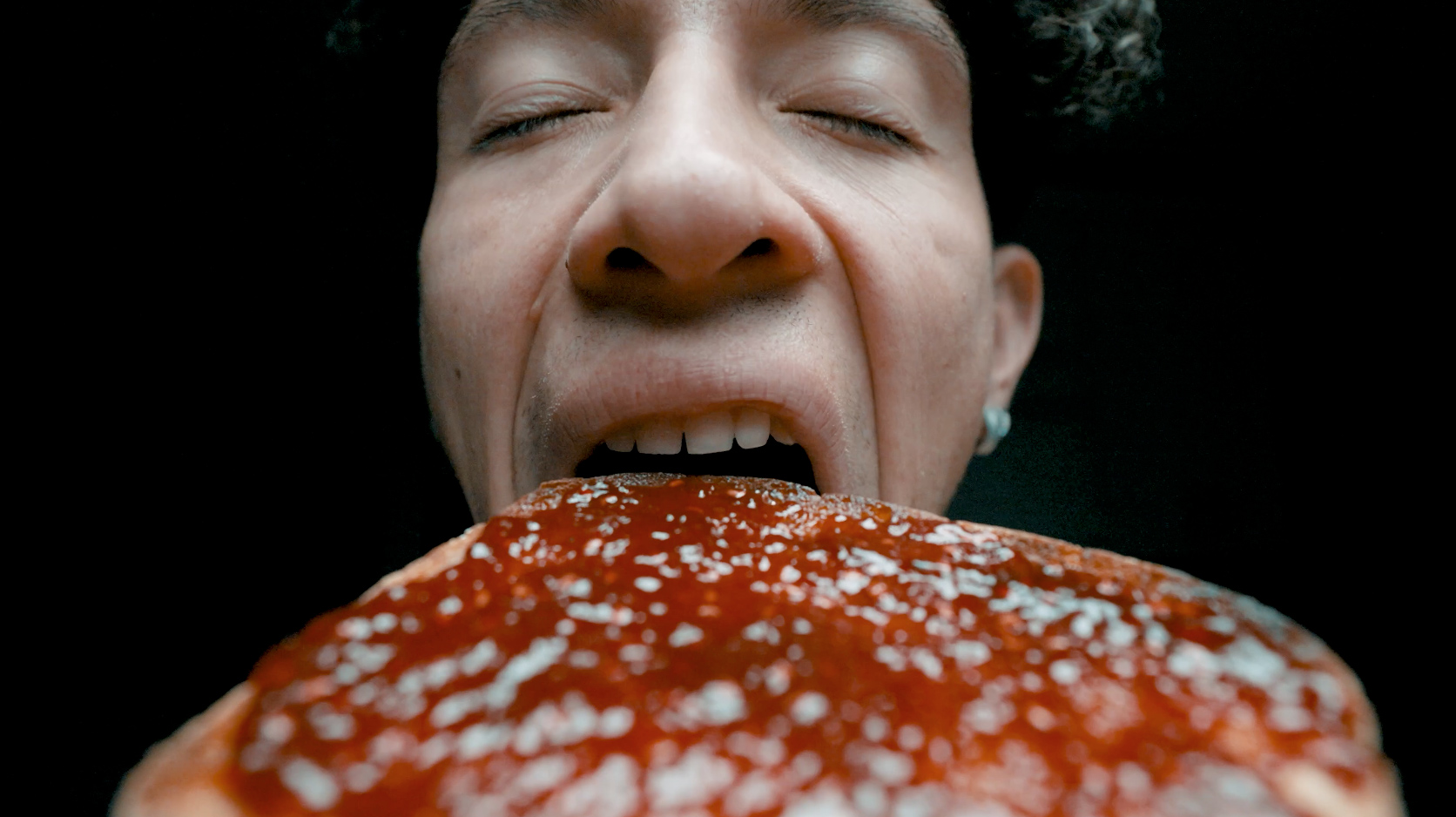
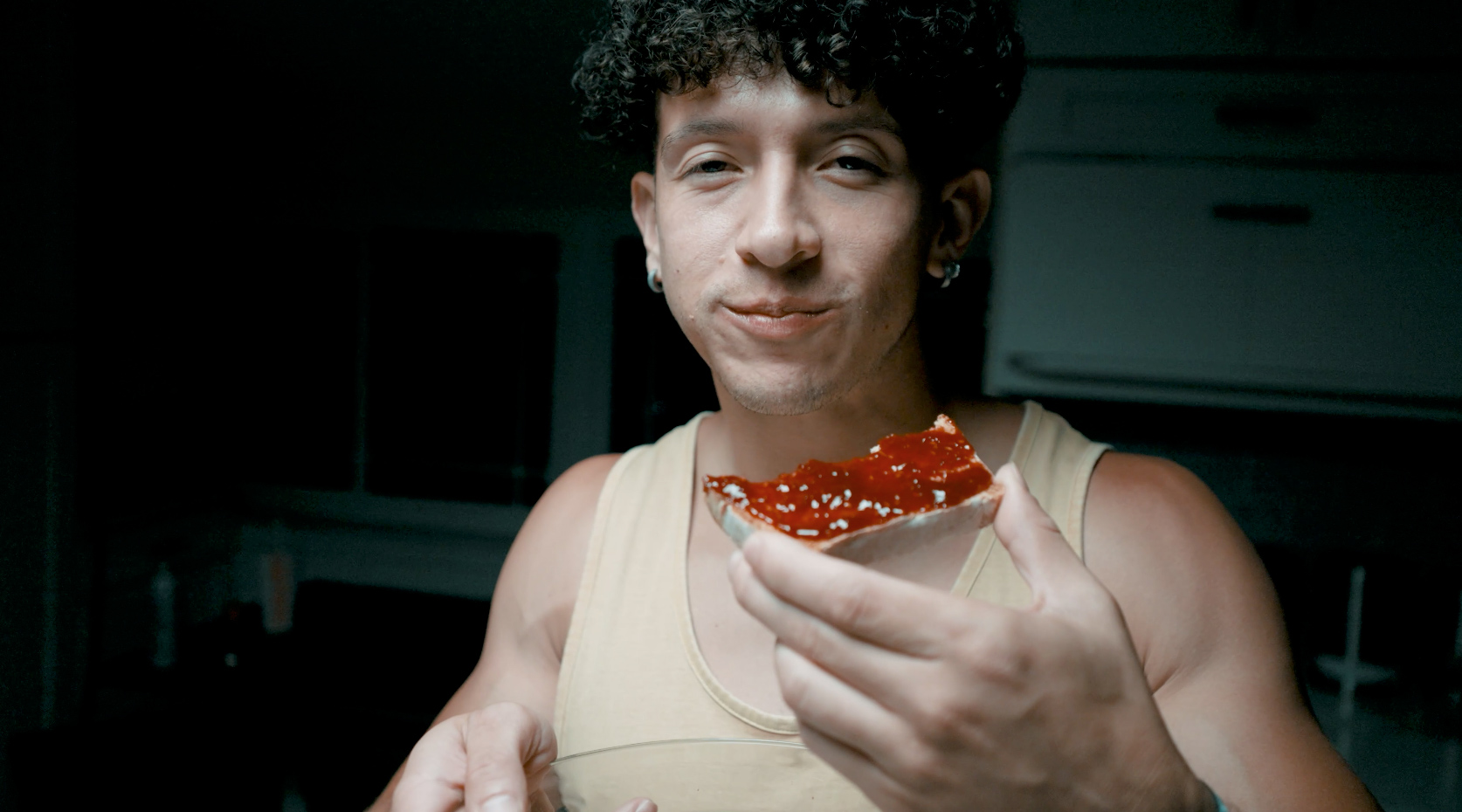
So there you have it. How to take something that is mundane and ordinary and turn it into something that’s more interesting and extraordinary. So you keep those cameras rollin’ and keep on clickin’.
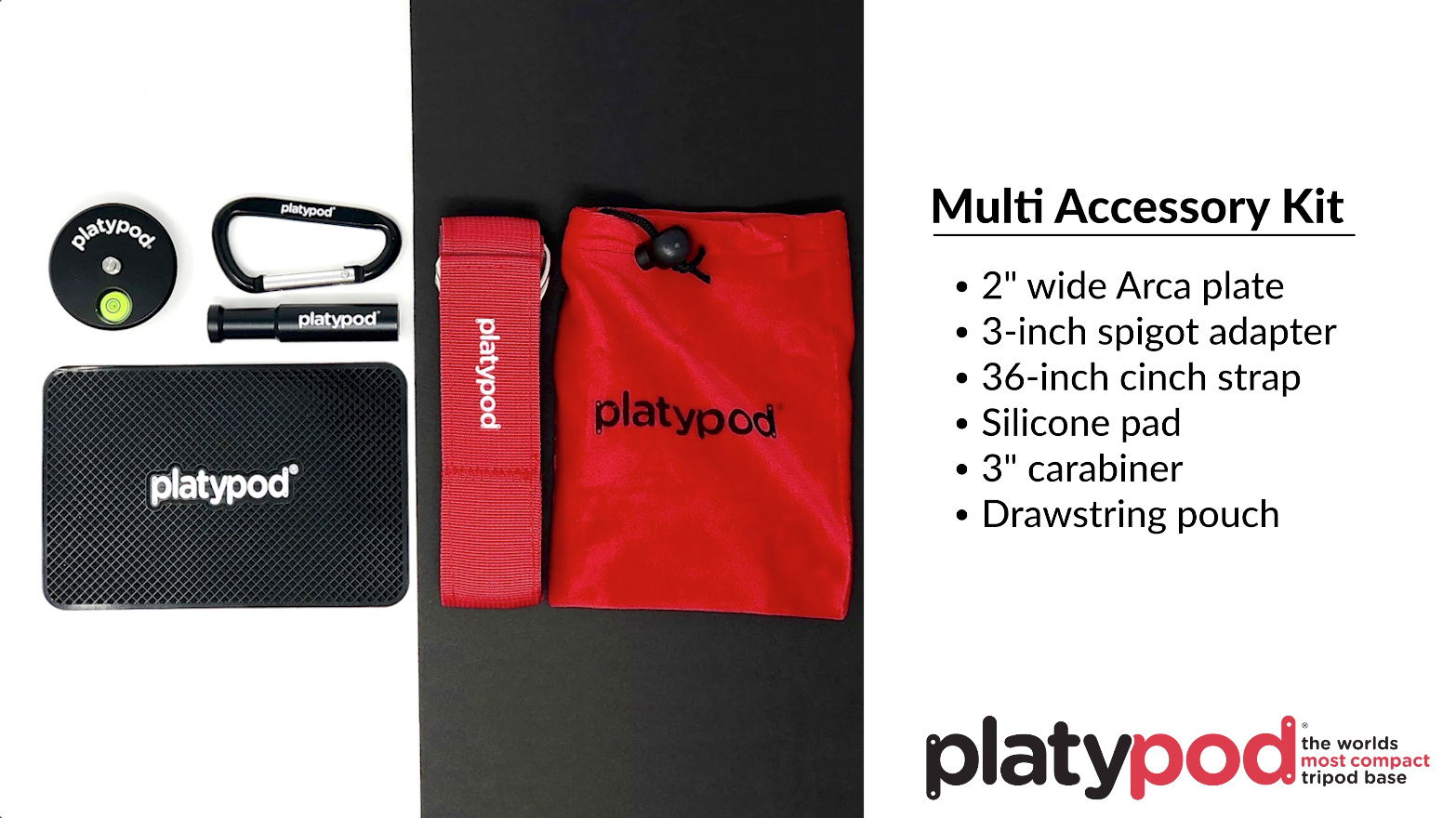
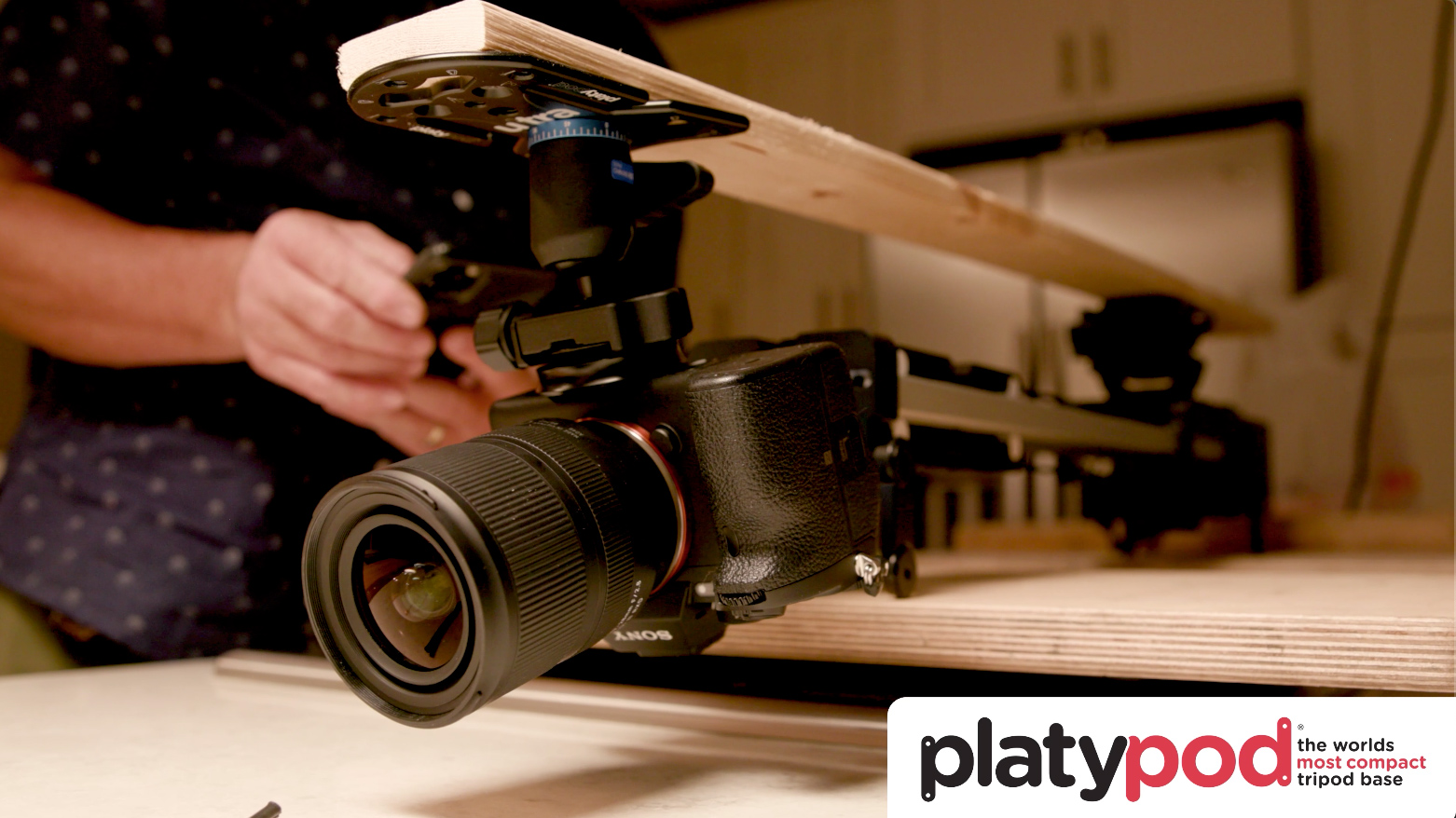
You know how much we love Platypod here at The Slanted Lens. Well we’ve got two of their packs are on sale right now. The multipack has something that is really unique. It’s got an ARCA Swiss plate that’s round. So it allows you to put it on your camera and you can slip it on any ball head and tighten it. You don’t have to orient it in a certain way. It makes that really super easy to use. This is something very new from Platypod. That’s on sale right now. 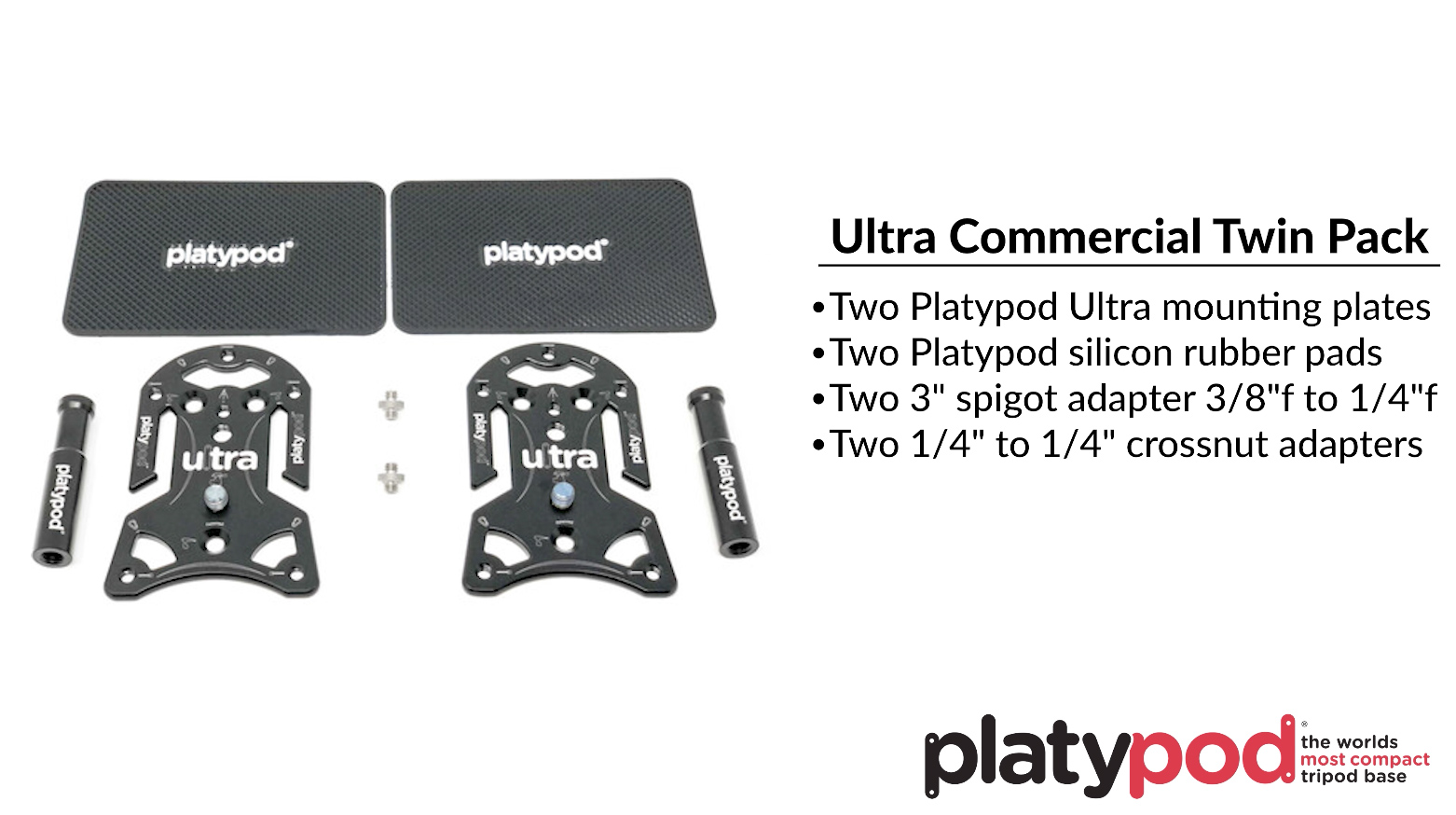
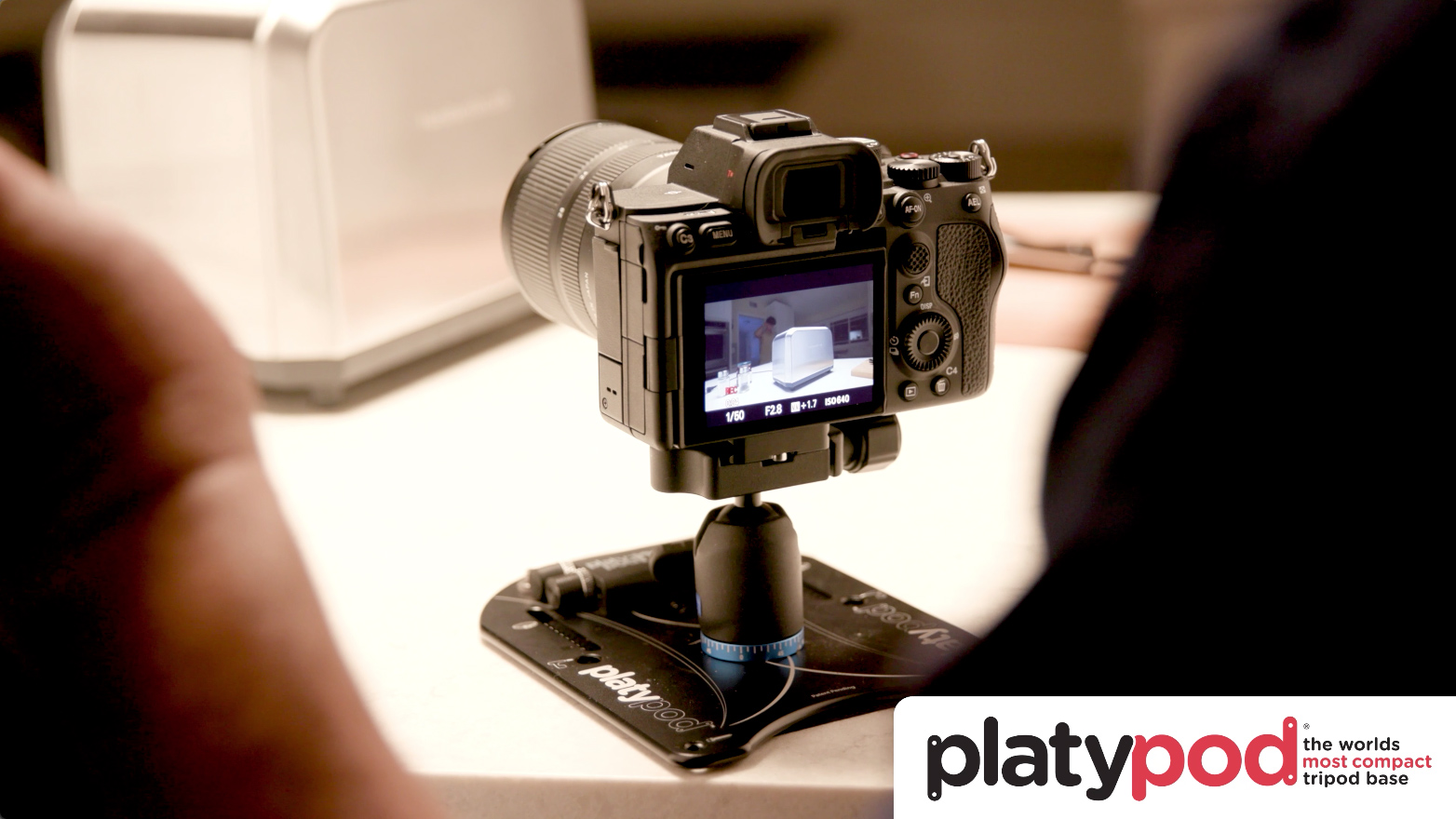 You should check that out. It’s got all the adapters you need to be able to make this work, which is the Ultra Twin Pack. This has got two of the ultras. It’s got two of the spigots. Basically it’s a baby pin but on one side is three eighths and the other is a quarter inch. It’s got a quarter inch to quarter inch adapter and it’s got the silicone pad to be able to put that down so they won’t slide if you put it on any kind of surface. I’ve got one of these attached to the ceiling over the top of our Slanted Lens set. I carry one in my backpack all the time. I think that’s a great way to stabilize a camera that’s lightweight, with you all the time and just easy to carry around. So check out these two they’re on sale now. So you check those out: Platypod’s Multi-Pack and Twin Pack!
You should check that out. It’s got all the adapters you need to be able to make this work, which is the Ultra Twin Pack. This has got two of the ultras. It’s got two of the spigots. Basically it’s a baby pin but on one side is three eighths and the other is a quarter inch. It’s got a quarter inch to quarter inch adapter and it’s got the silicone pad to be able to put that down so they won’t slide if you put it on any kind of surface. I’ve got one of these attached to the ceiling over the top of our Slanted Lens set. I carry one in my backpack all the time. I think that’s a great way to stabilize a camera that’s lightweight, with you all the time and just easy to carry around. So check out these two they’re on sale now. So you check those out: Platypod’s Multi-Pack and Twin Pack!